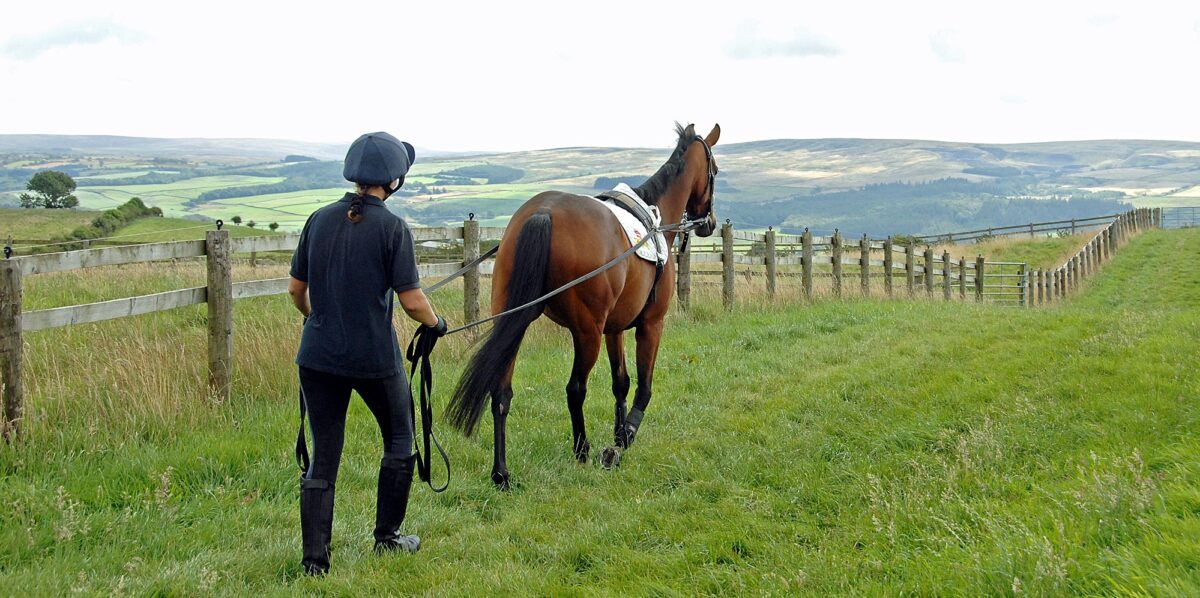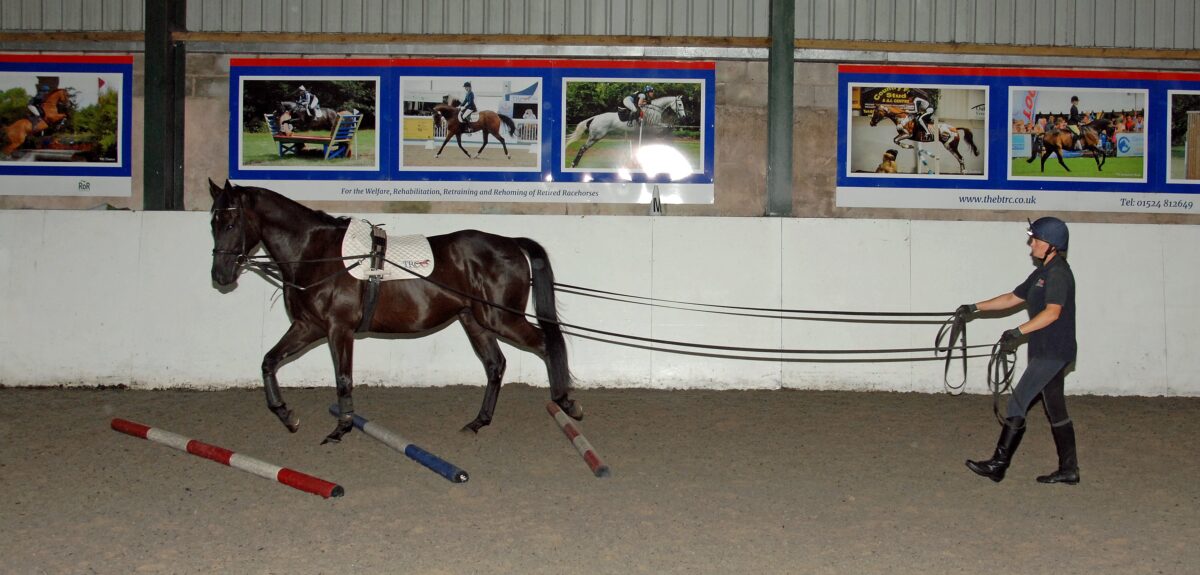
The BTRC has a unique stable block assigned purely for the rehabilitation of Thoroughbreds. The unit has 7 larger stables and a purpose built veterinary area to facilitate the needs of our veterinary team.
When each horse arrives at BTRC we ensure that they are fully assessed by our equestrian and veterinary team. The assessment includes spinal radiographs as standard due to the large number of horses entering the Centre with reported back pain. If a horse has a history of lameness or if any lameness is present then radiographs or ultrasounds will be used to investigate and identify the problem.







Each horse is assigned an individual rehabilitation programme that may include weekly physiotherapy sessions and regular assessments. Our primary objective during the rehabilitation process is to development core muscle strength enabling the horses to enter the retraining programme. This rehabilitation work involves extensive non-weight bearing ground work such as long-reining including hill work and we try to make use of and exercise the horses as much as possible outdoors in our beautiful countryside environment. When the horses become stronger we can also introduce pole work to further build up core strength.

Once the horse’s condition has improved and deemed strong enough they will move from a rehabilitation programme to a retraining programme and from then on start their education towards a successful second career.
It is important to have realistic expectations as not all horses will be successful through the programme. Due to many horses entering the Centre as part of the BTRC Vulnerable Horse Programme, a significant number of these animals are injured or have pre-existing conditions and the owners struggle to cope. BTRC offers the owner a lifeline when they have no where else to turn. For this reason the future is guarded for many of these horses due to their behaviour or undiagnosed clinical issues. BTRC will do everything in their power to enable these horses to become suitable for equestrian, but sometimes it is not possible as their conditions are chronic making them unsuitable for future equestrian use and it would be a welfare issue to keep them in work. If this occurs BTRC will keep the previous owner informed of the horse’s progress including sharing vet assessments and any images taken throughout their time at the Centre and if the heart-breaking decision is made that the horse must be put to sleep previous owners are invited to the Centre to say goodbye should they wish.
How does BTRC help?
The BTRC aims to provide Aftercare services and support in four ways:
- 24/7 Thoroughbred Helpline
- Vulnerable Horse Programme – including Rehabilitation (you are here) and Retraining.
- Education
- Community Engagement
For more information on Aftercare such as who is responsible and how Aftercare in the UK is funded please go to our BTA FAQ’s.
You must be logged in to post a comment.